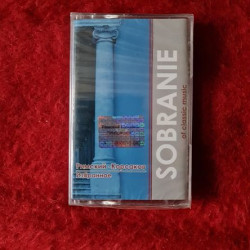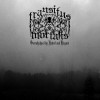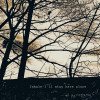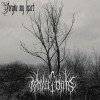Nikolai Andreyevich Rimsky-Korsakov - lll
Nikolai Andreyevich Rimsky-Korsakov (Russian: Никола́й Андре́евич Ри́мский-Ко́рсаков[a], tr. Nikoláy Andréyevich Rimskiy-Kórsakov[b], IPA: [nʲɪkəˈlaj ɐnˈdrʲejɪvʲɪtɕ ˈrʲimskʲɪj ˈkorsəkəf] (![]() listen); 18 March 1844, Tikhvin – 21 June 1908[c], Lyubensk, Saint Petersburg Governorate) was a Russian composer, and a member of the group of composers known as The Five.[d] He was a master of orchestration. His best-known orchestral compositions—Capriccio Espagnol, the Russian Easter Festival Overture, and the symphonic suite Scheherazade—are staples of the classical music repertoire, along with suites and excerpts from some of his 15 operas. Scheherazade is an example of his frequent use of fairy-tale and folk subjects.
listen); 18 March 1844, Tikhvin – 21 June 1908[c], Lyubensk, Saint Petersburg Governorate) was a Russian composer, and a member of the group of composers known as The Five.[d] He was a master of orchestration. His best-known orchestral compositions—Capriccio Espagnol, the Russian Easter Festival Overture, and the symphonic suite Scheherazade—are staples of the classical music repertoire, along with suites and excerpts from some of his 15 operas. Scheherazade is an example of his frequent use of fairy-tale and folk subjects.
Rimsky-Korsakov believed in developing a nationalistic style of classical music, as did his fellow composer Mily Balakirev and the critic Vladimir Stasov. This style employed Russian folk song and lore along with exotic harmonic, melodic and rhythmic elements in a practice known as musical orientalism,
and eschewed traditional Western compositional methods. Rimsky-Korsakov
appreciated Western musical techniques after he became a professor of
musical composition, harmony, and orchestration at the Saint Petersburg Conservatory
in 1871. He undertook a rigorous three-year program of self-education
and became a master of Western methods, incorporating them alongside the
influences of Mikhail Glinka
and fellow members of The Five. Rimsky-Korsakov's techniques of
composition and orchestration were further enriched by his exposure to
the works of Richard Wagner.
For much of his life, Rimsky-Korsakov combined his composition
and teaching with a career in the Russian military—first as an officer
in the Imperial Russian Navy,
then as the civilian Inspector of Naval Bands. He wrote that he
developed a passion for the ocean in childhood from reading books and
hearing of his older brother's exploits in the navy. This love of the
sea may have influenced him to write two of his best-known orchestral
works, the musical tableau Sadko (not to be confused with his later opera of the same name) and Scheherazade. As Inspector of Naval Bands, Rimsky-Korsakov expanded his knowledge of woodwind and brass
playing, which enhanced his abilities in orchestration. He passed this
knowledge to his students, and also posthumously through a textbook on
orchestration that was completed by his son-in-law Maximilian Steinberg.
Rimsky-Korsakov left a considerable body of original Russian nationalist
compositions. He prepared works by The Five for performance, which
brought them into the active classical repertoire (although there is
controversy over his editing of the works of Modest Mussorgsky),
and shaped a generation of younger composers and musicians during his
decades as an educator. Rimsky-Korsakov is therefore considered "the
main architect" of what the classical-music public considers the
"Russian style".[3] His influence on younger composers was especially important, as he served as a transitional figure between the autodidactism
exemplified by Glinka and The Five and professionally trained
composers, who became the norm in Russia by the closing years of the
19th century. While Rimsky-Korsakov's style was based on those of
Glinka, Balakirev, Hector Berlioz, Franz Liszt
and, for a brief period, Wagner, he "transmitted this style directly to
two generations of Russian composers" and influenced non-Russian
composers including Maurice Ravel, Claude Debussy, Paul Dukas, and Ottorino Respighi.[4]
See also
|
5.99€
Merchandise |
9.00€
CD |
9.99€
Tape |
5.00€
Merchandise |
5.99€
Merchandise |
|
7.99€
Tape |
6.99€
Tape |
7.15€
CD-R |
10.00€
CD |
25.00€
Vinyl, 12", Color 12" |











